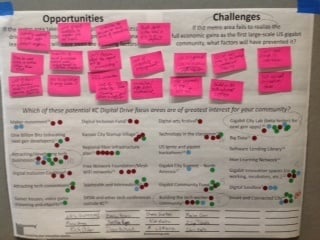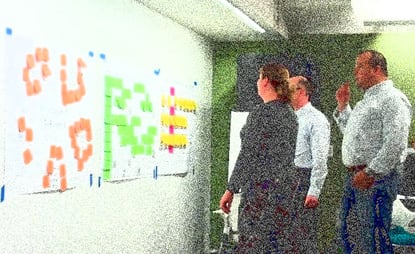When it comes to designing and conducting Brainzooming sessions, we know providing creative thinking exercises and structure to participants creates a more productive, efficient, beneficial, and stimulating experience, along with much better results.
In spite of that, what actually happens when people interact and use our process is that our creative thinking exercises change and grow constantly.
This change is a direct result of giving people the freedom to use our Brainzooming creative thinking exercises as a jumping off point for exploration, not as structures to follow without variation.
I understand how integral everything in the last three paragraphs is to what we do.
Yet our experiences the last two days conducting large (fifty and more than one hundred person) sessions suggests starting creative thinking exercises with ground rules and sharing what we expect to accomplish implies to many people that the Brainzooming approach is rigid.
Change and Grow Constantly
Case in point, one recruited facilitator for yesterday’s incredible session at the Nature Explore / Outdoor Classroom Project Leadership Institute reported to me that he had “subverted me” by telling a table that multiple people could write ideas instead of picking one person as I had suggested earlier. I told him that was fine, he wasn’t subverting me, and he didn’t even need to let me know . . . whatever he told them to do would make sense.
A participant at another table close by asked about varying the instructions for how they applied sticky dots during a voting exercise. I reiterated what I had told the group, but said if she did it differently it would be fine and that I’d never have any idea afterward.
It’s those variations to the creative thinking exercises as a session happens that make them grow and get better.
What I don’t tell participants is how much variation I throw at them that’s never apparent to them. In these last two days, we went “off script” through:
- Changing from a two-facilitator to a three-facilitator session right before it happened.
- Having each small group approach a planned set of creative thinking exercises in a completely different path to compensate for suddenly having three facilitators.
- Telling groups they could take their posters outside and work instead of staying in the crowded conference room to hear the ongoing instructions.
- Taking precious, limited time with the group to have one hundred people sing Happy Birthday to one of the participants.
- Using the last two minutes of extra time (when I couldn’t get more sticky dots to people) to spontaneously have people draw hearts on ideas they loved.
None of those variations was part of our internal instructions for the session beforehand.
All of them and more (including audience-suggested changes) were implemented on the fly to make the most of the creative thinking exercises as they were happening.
Creative Thinking Exercises Use Structure and Variation
We design and plan a session in tremendous detail whether it includes five people or more than a hundred people. Once we have a plan, however, we’re open to changing it like crazy to get the most from and deliver the most to a group.
Does it work?
As one participant from Chicago at the Leadership Institute told me as she was getting ready to leave, “I see there’s a difference between brainstorming and Brainzooming. Brainzooming is fun.”
I’ll take that as a huge validation for the power of structure and variation working together! – Mike Brown
If you enjoyed this article, subscribe to the free Brainzooming email updates.
The Brainzooming Group helps make smart organizations more successful by rapidly expanding their strategic options and creating innovative plans they can efficiently implement. Email us at info@brainzooming.com or call us at 816-509-5320 to learn how we can help you enhance your brand’s innovation strategy and implementation success.





